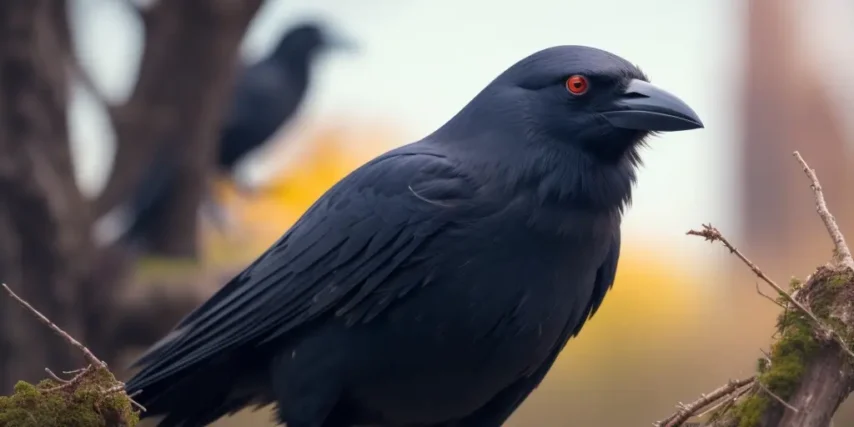The Enigmatic Lifespan of Crows: Unraveling the Secrets of These Intelligent Avians
Crows, members of the Corvidae family, have long captured the human imagination with their intelligence, adaptability, and mysterious behaviors. One aspect of their lives that often piques curiosity is their lifespan. How long do these enigmatic birds live, and what factors influence their longevity? In this exploration, we delve into the fascinating world of crows, shedding light on their lifespan, the challenges they face, and the remarkable adaptations that contribute to their survival.
The Average Lifespan of Crows:
On average, crows have a lifespan of 7 to 8 years in the wild. However, this is a generalized estimate, and various factors come into play that can significantly influence the actual lifespan of an individual crow. Understanding these factors is crucial to comprehending the complexities of crow longevity.

- Predators and Threats:
Crows face numerous threats in the wild, ranging from natural predators to human-induced risks. Predatory birds, such as eagles and hawks, pose a constant danger to crows, especially during their vulnerable stages of life. Additionally, environmental factors like severe weather conditions and habitat loss can impact their survival.
- Human-Induced Risks:
The expansion of urban areas brings both opportunities and challenges for crows. While human settlements provide new sources of food, they also expose these birds to potential hazards like traffic, pollution, and, unfortunately, deliberate harm by humans. Understanding the interplay between crows and their human neighbors is crucial for developing strategies to mitigate these risks.
- Diet and Nutrition:
The diet of crows plays a significant role in their overall health and longevity. These omnivorous birds have a diverse diet that includes fruits, seeds, insects, small mammals, and even carrion. Access to a balanced and abundant food supply can positively impact their lifespan. Conversely, exposure to pollutants or a scarcity of food resources can lead to health issues and shorter lifespans.
- Social Structure:
Crows are highly social birds, and their intricate social structures contribute to their survival. Living in family groups, they exhibit cooperative behaviors, share information, and even engage in communal defense against predators. The dynamics within these groups can influence the overall well-being of individual crows, affecting their ability to thrive and reach their maximum lifespan.

- Adaptations and Intelligence:
The remarkable intelligence of crows is well-documented. Their ability to use tools, solve problems, and even recognize human faces sets them apart in the avian world. This intelligence is not only a testament to their cognitive abilities but also plays a role in their ability to navigate complex environments, avoid threats, and adapt to changing circumstances, ultimately influencing their lifespan.
The Oldest Living Crows:
While the average lifespan provides a general understanding, there have been instances of crows living well beyond the norm. In captivity, where they are shielded from many of the risks present in the wild, crows can live into their twenties. One famous case is that of a captive carrion crow named “Fable,” who lived to be 22 years old. These exceptional cases underscore the potential for extended lifespans when crows are provided with a controlled and supportive environment.
Challenges and Conservation:
Despite their adaptability, crows face challenges in the modern world. Urbanization, habitat destruction, and the use of pesticides pose significant threats to their populations. Understanding the delicate balance between humans and crows is essential for fostering coexistence. Conservation efforts that focus on preserving natural habitats, reducing pollution, and raising awareness about the importance of these intelligent birds can contribute to their overall well-being and ensure a thriving crow population for generations to come.

The lifespan of crows is a dynamic and multifaceted aspect of their existence. Shaped by factors such as predation, environmental challenges, social dynamics, and individual adaptability, the longevity of these birds reflects their resilience in the face of diverse pressures. As we continue to unravel the mysteries of these intelligent avians, a deeper appreciation for their role in ecosystems and a commitment to their conservation become imperative. Crows, with their keen minds and complex societies, invite us to explore the interconnected web of life and embrace the responsibility of being stewards of the natural world they inhabit.







